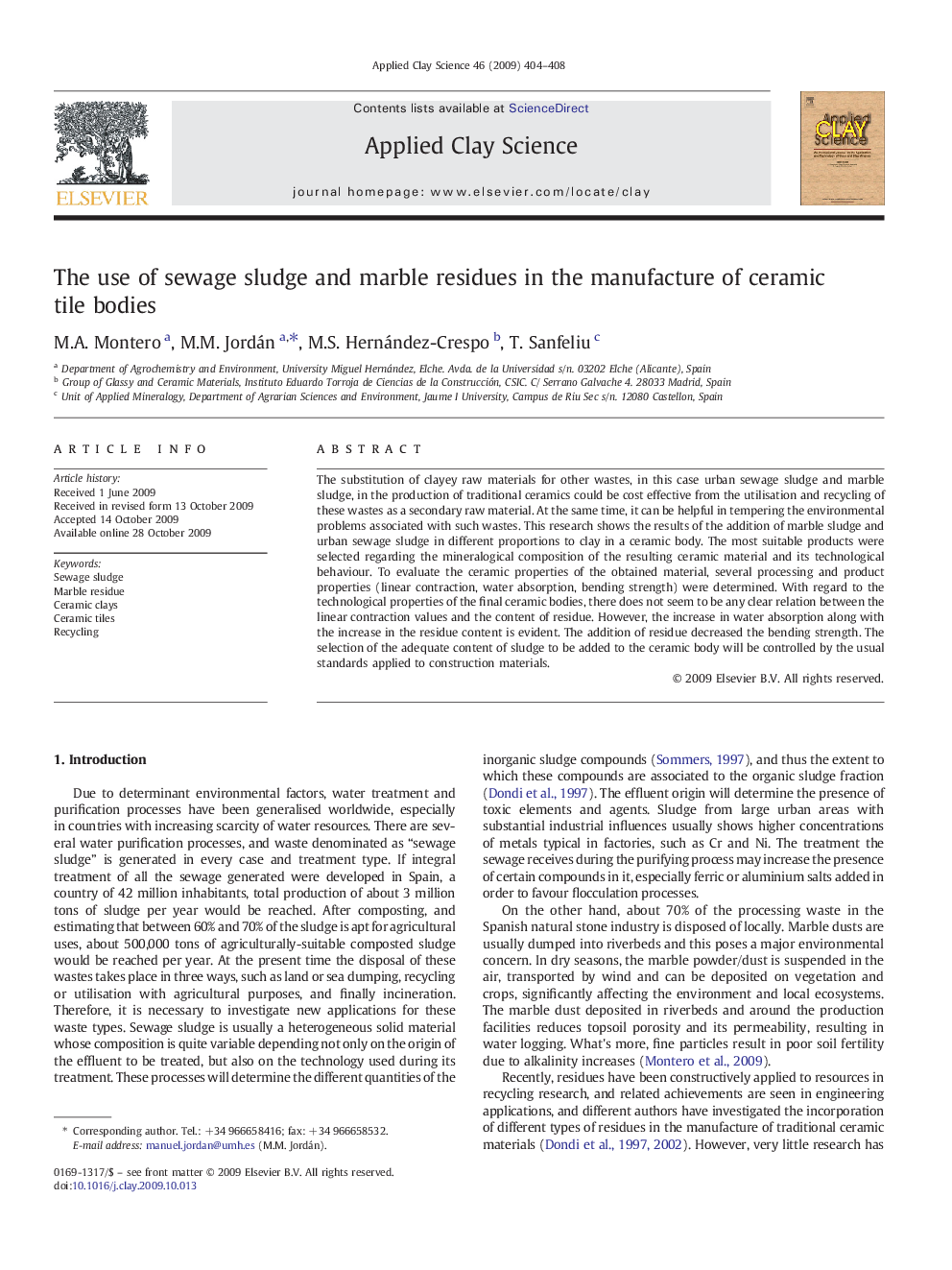| Article ID | Journal | Published Year | Pages | File Type |
|---|---|---|---|---|
| 1695962 | Applied Clay Science | 2009 | 5 Pages |
The substitution of clayey raw materials for other wastes, in this case urban sewage sludge and marble sludge, in the production of traditional ceramics could be cost effective from the utilisation and recycling of these wastes as a secondary raw material. At the same time, it can be helpful in tempering the environmental problems associated with such wastes. This research shows the results of the addition of marble sludge and urban sewage sludge in different proportions to clay in a ceramic body. The most suitable products were selected regarding the mineralogical composition of the resulting ceramic material and its technological behaviour. To evaluate the ceramic properties of the obtained material, several processing and product properties (linear contraction, water absorption, bending strength) were determined. With regard to the technological properties of the final ceramic bodies, there does not seem to be any clear relation between the linear contraction values and the content of residue. However, the increase in water absorption along with the increase in the residue content is evident. The addition of residue decreased the bending strength. The selection of the adequate content of sludge to be added to the ceramic body will be controlled by the usual standards applied to construction materials.
